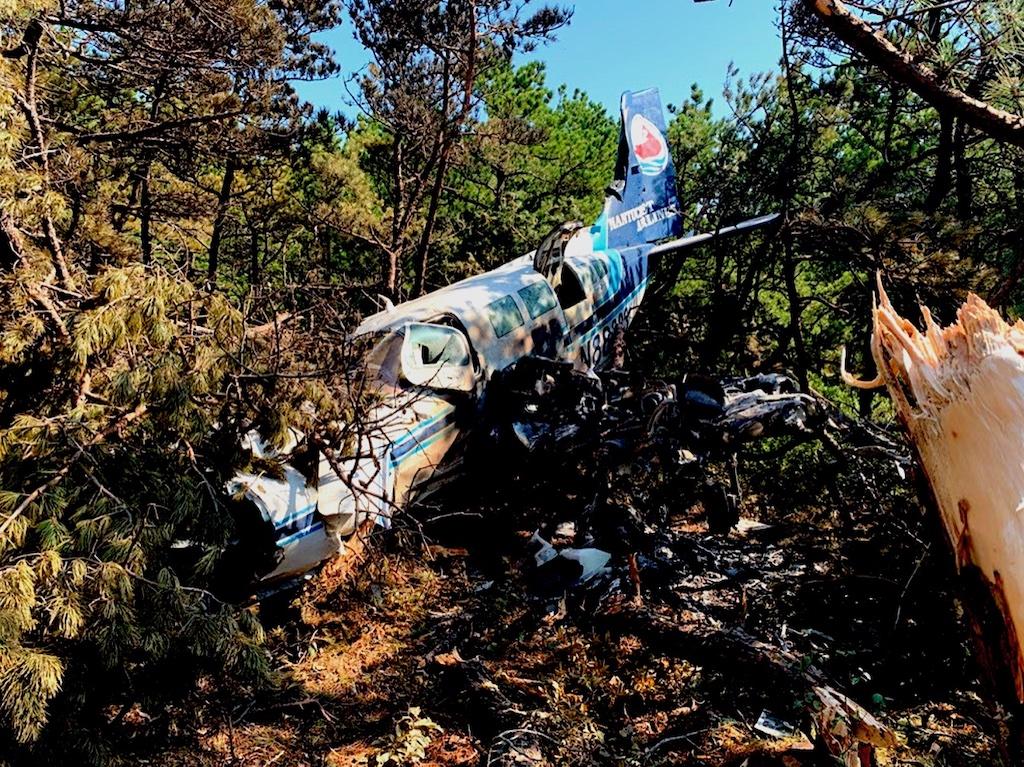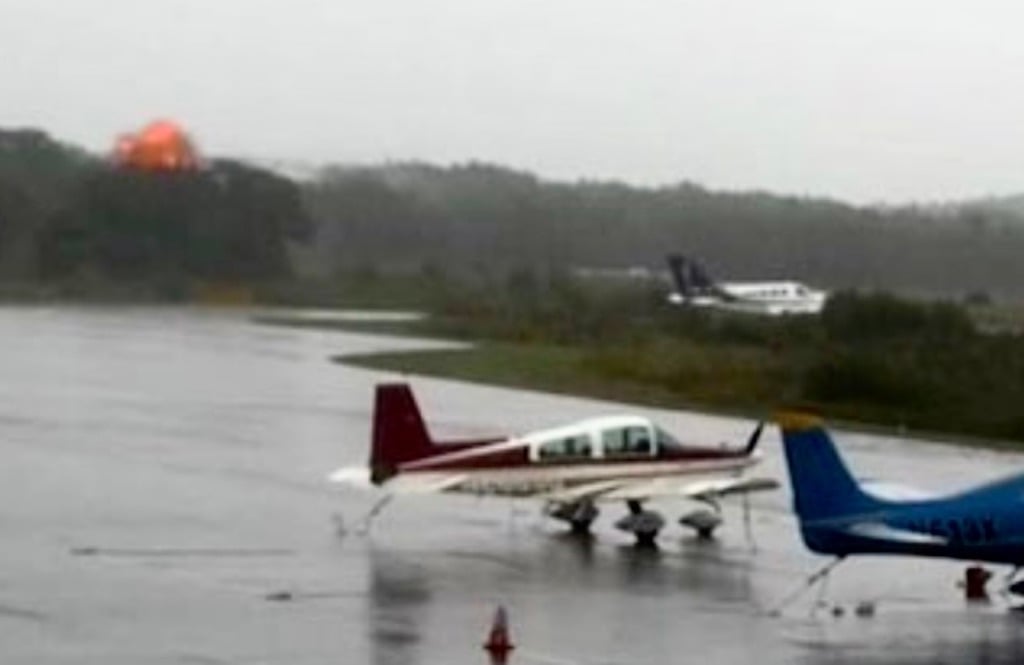
Left side of the airplane after it collided with trees.
The pilot of a Cape Air Cessna 402C expected to be able to stop when he landed at Provincetown, Massachusetts, on a fall day in 2021. The runway was short and rain was falling, and after he landed, the pilot decided to go around. He didn’t have a plan for what to do if it looked like he couldn’t stop, and he made the wrong decision. The twin-piston airplane, registered N88833, was wrecked and all seven people onboard were injured, some quite seriously. Cape Air didn’t have a policy to help the pilot make the decision at that time. It does now.
The NTSB had recommended a “commit-to-stop” policy in 2011 after a Hawker Beechcraft 125-800A twinjet crashed in Owatonna, Minnesota. The pilot of that aircraft hesitated far too long after landing before attempting a go-around, and the jet was destroyed when it hit the localizer antenna at high speed. The idea of a commit-to-stop policy is to predetermine the latest point during landing when a go-around may be attempted.
The accident involving Cape Air Flight 2072 took place on Sept. 9, 2021. It was a scheduled Part 135 commuter flight from Boston Logan International Airport (BOS) to Provincetown Municipal Airport (PVC) on Cape Cod. The straight-line distance from BOS to PVC is only 39 nm, so the flight was short. The veteran pilot knew the weather conditions at PVC were limiting. The only suitable approach was the ILS to Runway 7. With a 200-ft. overcast covering and visibility of 3-to-4 mi. in moderate rain, he could not land into the wind, which was 5 kts or less from the southwest when the flight departed. He would be landing with a light tailwind.
The flight departed BOS at 1504 EDT. It headed south before turning southeast. At 1511, the pilot told air traffic control that he had the weather at PVC and could accept the ILS RWY 7 approach. ATC cleared him to proceed direct to the WOMECK intersection and then, at 1513, cleared him for the ILS approach. FAA radar surveillance data showed that the airplane crossed the final approach fix (FAF) at 1524, at an altitude of about 2,000 ft. msl, and landed about 3 min. later, at 1527.
A low-pressure system and associated cold front was moving across Massachusetts with moderate to heavy rain and thunderstorms across the region. There was a current convective SIGMET weather advisory over the route of flight and destination airport, but there was very little potential for windshear or microburst activity.
The pilot, who was first interviewed Oct. 1 due to his injuries, said he left the autopilot engaged until crossing the FAF, then turned it off and lowered the landing gear. With flaps partially extended, he slowed gradually and broke out of the clouds at 500 ft. He saw the airport’s runway lights and noticed that rain was falling. At about 300 ft. above the ground, he extended the flaps to 45 degrees. The airplane encountered “an aggressive sinking tendency” and “very heavy rain” at 50-to-100 ft. above the ground. It was the pilot’s recollection that he initiated a go-around before the airplane touched down.
He remembered touching down for only about two seconds and did not remember applying the wheel brakes. During the go-around, he was unable to establish a positive rate of climb and the wings were buffeting. The airplane struck a cluster of pine trees about 660 ft. from the departure end of the runway. It then crossed a two-lane road, impacted the ground and more trees before coming to rest. A fire broke out that consumed most of the left wing and a portion of the right wing.
The pilot and all six passengers suffered extensive burns as well as broken bones and other injuries. No one used the emergency exit on the right forward part of the fuselage. They all left the airplane by squeezing through the top half of the main cabin clamshell door on the left side of the airplane in the rear cabin area. Because the airplane was in a nose-down attitude, they each had to jump about 9.5 ft. to the ground. The pilot, who was about to exit, went back and released one passenger’s lap belt and helped her exit the airplane.
Several private vehicles and park rangers came to the site and assisted the injured until ambulances could arrive.
The Investigation

The NTSB conducted a Class 3 investigation of the accident. Investigators from the FAA, Textron Aviation and Cape Air participated. The safety board issued a final report on Aug. 15, 2023, just under two years after the accident. Class 3 investigations allow for safety messages, recommendations, or strategies to avoid future accidents, but none were issued.
Three interviews done by an investigator in the first week after the accident helped frame the issues. The first was an interview with a Cape Air pilot who witnessed the accident. He had about 20,000 hr. in the Cessna 402 and had been a Cape Air employee for 23 years. He had just come from BOS, discharged his passengers, and was waiting at the far end of Runway 27 for takeoff. He spoke with the accident captain on the Unicom frequency as that flight was inbound to the airport. He reported that the runway lights were on, the visibility had improved, and the rain was subsiding.
The pilot witness first saw the airplane after it had landed and was on the landing rollout, about halfway down the runway. He thought it was moving “a little faster than it should be.” When the airplane took off, it was climbing slower than he thought it should. He saw the airplane clear the localizer antenna and disappear into the trees, then saw a ball of flame erupt. He called fire rescue and ATC, then taxied back to the gate, shut down and called Cape Air’s duty officer. The pilot witness did not see any pooling of water on the runway and had never had an issue with hydroplaning at PVC.
He mentioned that Cape Air prohibited instrument approaches to short runways (4,000 ft. or less) when the tailwind component was 5 kts or more, and he had been careful to observe that rule when he landed at PVC that day.
Contrary to his recollection, the pilot had first attempted to brake before commencing a go-around, we report in Part 2 of this article.





